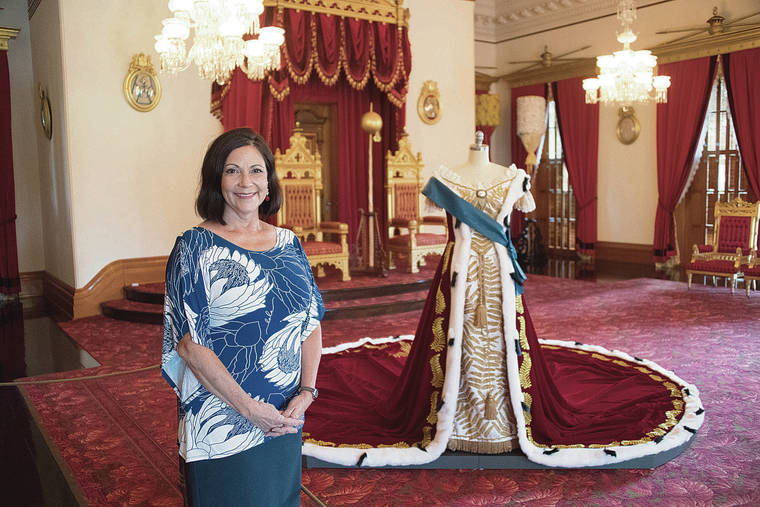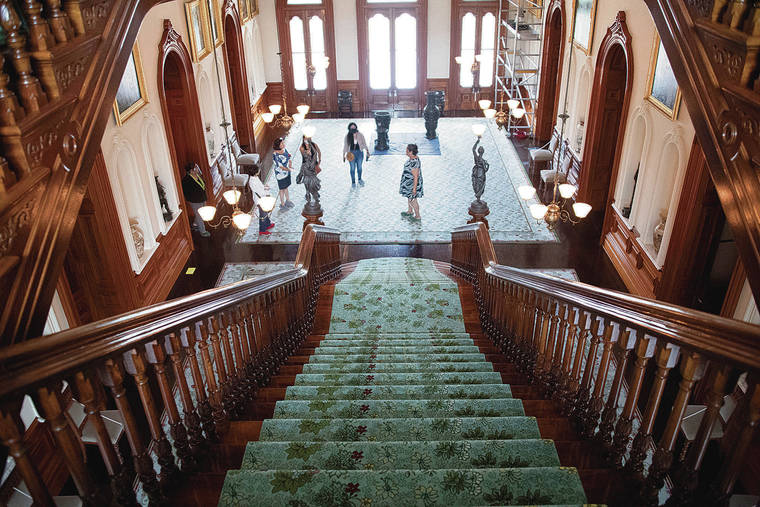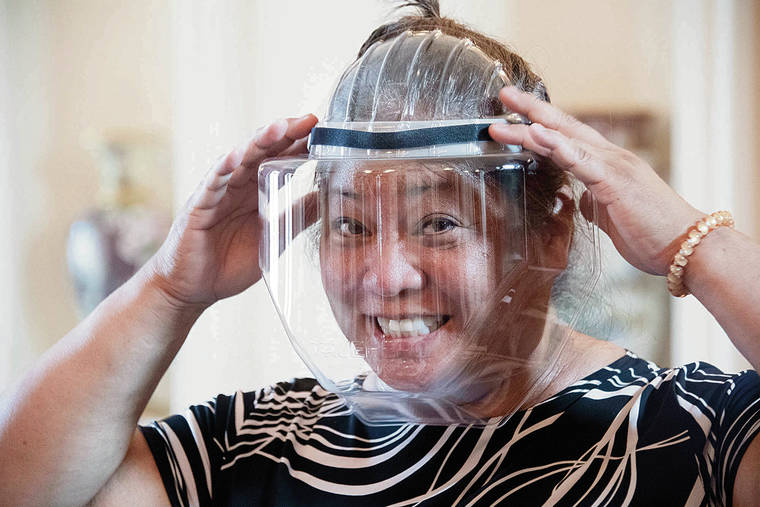Iolani Palace needs kamaaina visitors to help keep its doors open and preserve historic Hawaiian treasures


CRAIG T. KOJIMA / CKOJIMA@STARADVERTISER.COM
Paula Akana, executive director of Friends of Iolani Palace, is pictured in the throne room, with Queen Kapiolani’s coronation robe and gown. “It’s time for the kamaaina to discover all these cultural treasures of Hawaii,” she said.

CRAIG T. KOJIMA / CKOJIMA@STARADVERTISER.COM
Visitors to Iolani Palace will be encouraged to use this grand staircase instead of crowding into the small elevator.

CRAIG T. KOJIMA / CKOJIMA@STARADVERTISER.COM
Noelani Ah Yuen, director of facilities, wore a face shield on Wednesday.




What is the only royal palace in the United States where royalty has sat on thrones and entertained foreign monarchs?
While most Hawaii residents know the answer, few know Iolani Palace — a state monument — has been maintained and run by The Friends of Iolani Palace, a nonprofit organization, without state funding and monthly maintenance costs alone running $30,000 to $35,000. (Its air-conditioning system runs 24/7 to provide temperature control to preserve its cultural treasures.)
Due to the COVID-19 shutdown, daily visitors of 450 to 500 and daily revenue averaging $7,000 from ticket and gift shop sales — 90% of its income — went to zero.
>> PHOTOS: Tour of Iolani Palace ahead of COVID-19 reopening Opens in a new tab
The Friends group is hoping that by slowly reopening its doors June 19 to kamaaina, up to 102 per day, weekends only, ticket and gift shop sales could provide just enough to help tide it over until grants, loans and donations come through.
The nonprofit has made cuts to its personnel budget, furloughing half its staff.
Don't miss out on what's happening!
Stay in touch with breaking news, as it happens, conveniently in your email inbox. It's FREE!
At a time when so many are in dire financial straits, Friends of Iolani Palace Executive Director Paula Akana said, “It’s hard to ask for money.”
But she points out how special it is to have a royal palace, and adds, “Our cultural places are places of healing as well.”
The former KITV news anchor joined The Friends of Iolani Palace a year ago, and said she was surprised then to learn so many locals had never visited the palace, viewing it as a tourist attraction.
“It’s time for the kamaaina to discover all these cultural treasures of Hawaii,” she said.
Akana, whose connections to the palace go back generations, was clearly moved Wednesday when she extolled the historic aspects and the stories within the palace walls and the painstaking work that went into restoring it beginning in the 1960s.
Without tourists returning, locals will be able to discover the palace, hear the stories and feel history in the very same place as the monarchs of the past ruled, lived, entertained and were even held captive.
The most poignant room is the imprisonment room —spare with little furnishings — where Queen Liliuokalani was held for eight months before being allowed to return to her residence, Washington Place, Akana said. “There friends would bring her flowers wrapped in the newspaper of the day.”
There, the quilt she had begun to sew is on display. “You can really feel the sorrow and hopes she had,” she said.
Also King Kalakaua, known as the Merry Monarch, was fascinated by technology and spent time with Thomas Edison, bringing to Iolani Palace electricity four years before the White House got electricity.
Hanging in the dining hall are original chandeliers, retrofitted with LED lighting.
Just before the coronavirus struck, the Friends group had gone to the Legislature asking for funding.
It had a leaky roof that would cost $1 million to repair and an expensive bee colony removal project. The bees live between the masonry fascia and the brick walls in all four corners.
What could the worst-case scenario be if the Friends of Iolani Palace were unable to pay its maintenance bills?
It would have to return the building to the state, and all the cultural resources inside the palace would be returned to their owners, Akana said. “We don’t want to see that done.”
After the 1893 overthrow of the Hawaiian kingdom, the palace became the government headquarters for the provisional government, and later the government Capitol up until the state government left in 1969.
After Kalakaua’s death and the overthrow, much of the furnishings were auctioned off.
Although the palace was brought back to its royal splendor, the reality is it could turn into government offices again.
Akana points to a photograph on display in the basement showing the state House in 1966 crowding the throne room.
“They pushed the thrones back and met here,” Akana said in the throne room.
The Friends also have gleaned best practices from museums worldwide and have put into place social distancing and hygiene measures.
One change is that visitors will be encouraged to use the majestic grand staircase — the largest freestanding koa structure in the world — rather than crowd into its small, aging elevator.
Tickets are available only by going online to iolanipalace.org. Tickets for self-led audio tours are $11.95 for adults, $4.95 for children ages 5-12. Guided tours are also available.



